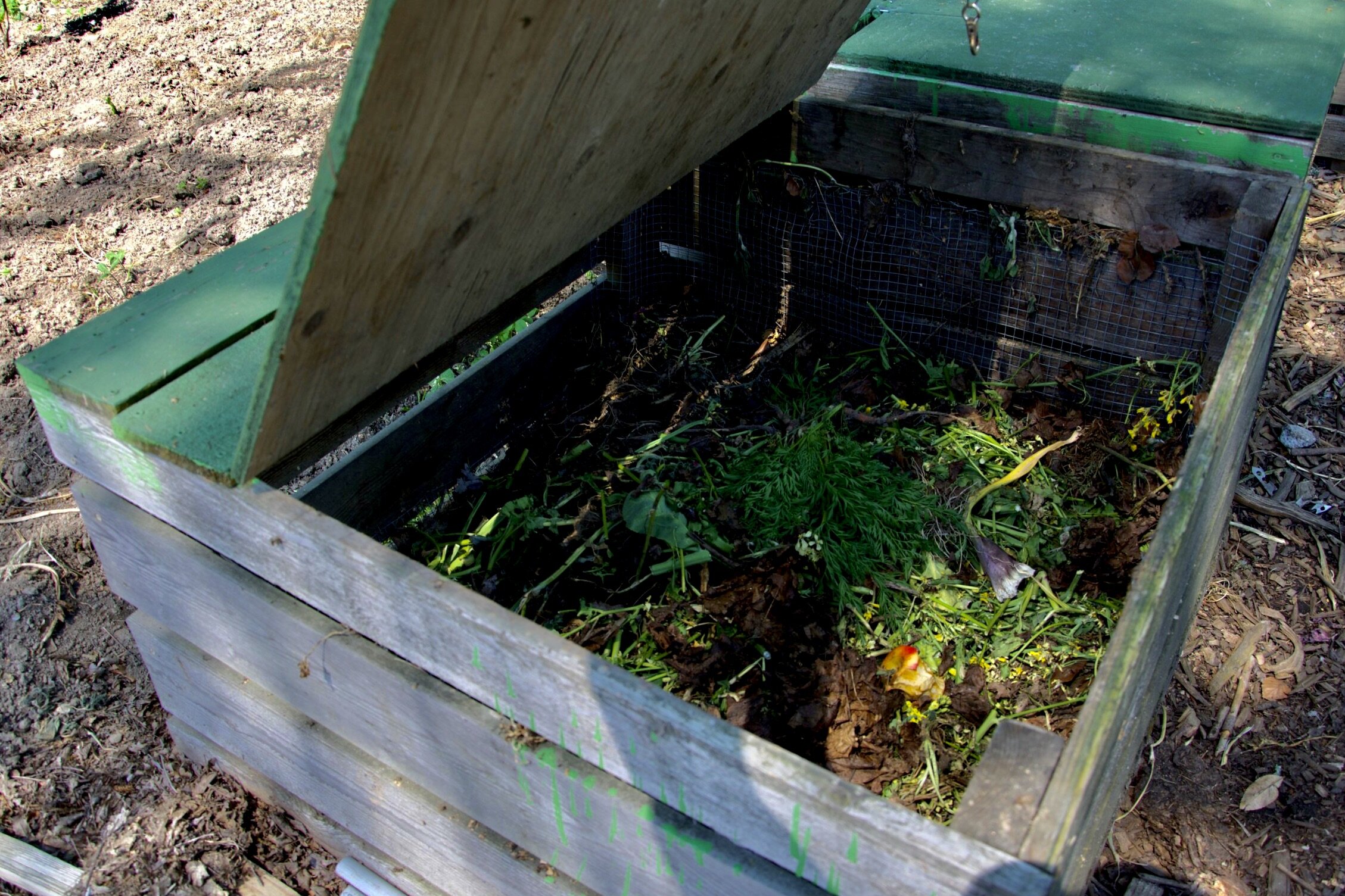Gardens designed by neighbourhood communities
Tea Swamp Community Garden (Vancouver, British Columbia, 2018).
In the summer of 2018, I started an independent field investigation in some urban community gardens in Vancouver. My initial motivation was to investigate how objects can contribute to developing the urban community garden culture. I wondered how these products and systems could welcome the collaboration of community gardeners and garden goers, as well as foster both human–human and human–Nature (beyond human) relationships.
For three months, I navigated eleven gardens photographing gardening objects and communication artifacts, and observed how these artefacts are situated in the environment. Many of the objects seem to be vernacular pieces that take the form of adorned, hand-painted signs to identify the species in the garden; handmade objects such as shelves, compost bins, hose holders, and plantation beds to support gardener’s everyday activities; and wall-mounted communication materials to share communal information. Through this field observation, I noted that the community gardens’ spacial structure per se are as not organic as many seem to be. The combination of the vernacular artefacts with the garden’s inner pathways, the plant arrangements, and even the location of the gardens in the neighbourhood are intentionally co-created by gardeners, neighbourhood and the City of Vancouver. These gardens also seem to carry the values of the communities they support (collaboration, service, care).
During this summer, I also volunteered at the UBC Farm and the UBC xʷc̓ic̓əsəm Indigenous Health Research and Education Garden, sowing, transplanting, harvesting, but also engaging in inspiring conversations concerning the respect for the land, the importance of community work, and intentionality in the form of apparently simple questions such as what are your intentions today?.
Both field observations and volunteering experiences led me to reflect on the idea that a garden is also an expression of how the environment—in this case the urban community garden—responds to human’s intent to transform urban areas into relatable structures.
Two years later, as I dive into my PhD studies at the UBC School of Information, these experiences are even more present. I continue reflecting on community gardens as spaces for nurturing relationships between humans and Nature in urban areas. However, other questions have arisen ever since my first field trips in 2018. Questions such as what are the implications of cultivating food on urban environments might have to the ongoing social and environmental crises (food security, extreme whether conditions)? and what are the responsibilities of information and design professionals in addressing these issues? Also, as I navigate urban community gardens on unceded territories of the Coast Salish peoples of the Səlil̓wətaɬ (Tsleil-Waututh), Skwxwú7mesh (Squamish), and xʷməθkwəy̓əm (Musqueam) Nations (a.k.a. Vancouver, British Columbia), I have reflected on the relations and responsibilities that uninvited gardeners (myself included) have and share on these lands. These are huge questions that I will continue weaving as part of my design and information sciences scholarships, as well as a person living on these lands.
Hand-painted crop identification signs. In many community gardens in the city, these signs are painted during community gatherings. Riley Park Community Garden (Vancouver, British Columbia, 2018).
Communal shelves for sharing vegetables and herbs with the neighbourhood. Riley Park Community Garden (Vancouver, British Columbia, 2018).
Compost box. Riley Park Community Garden (Vancouver, British Columbia, 2018).
Raised planters can welcome people who have struggle working on the ground. They are also an alternative way of gardening when planting on the ground is not an option (e.g., apartment balconies). However, the provenance of the lumber used in the construction of planters can be a critical point of concern in relation to environmental issues. Riley Park Community Garden (Vancouver, British Columbia, 2018).





